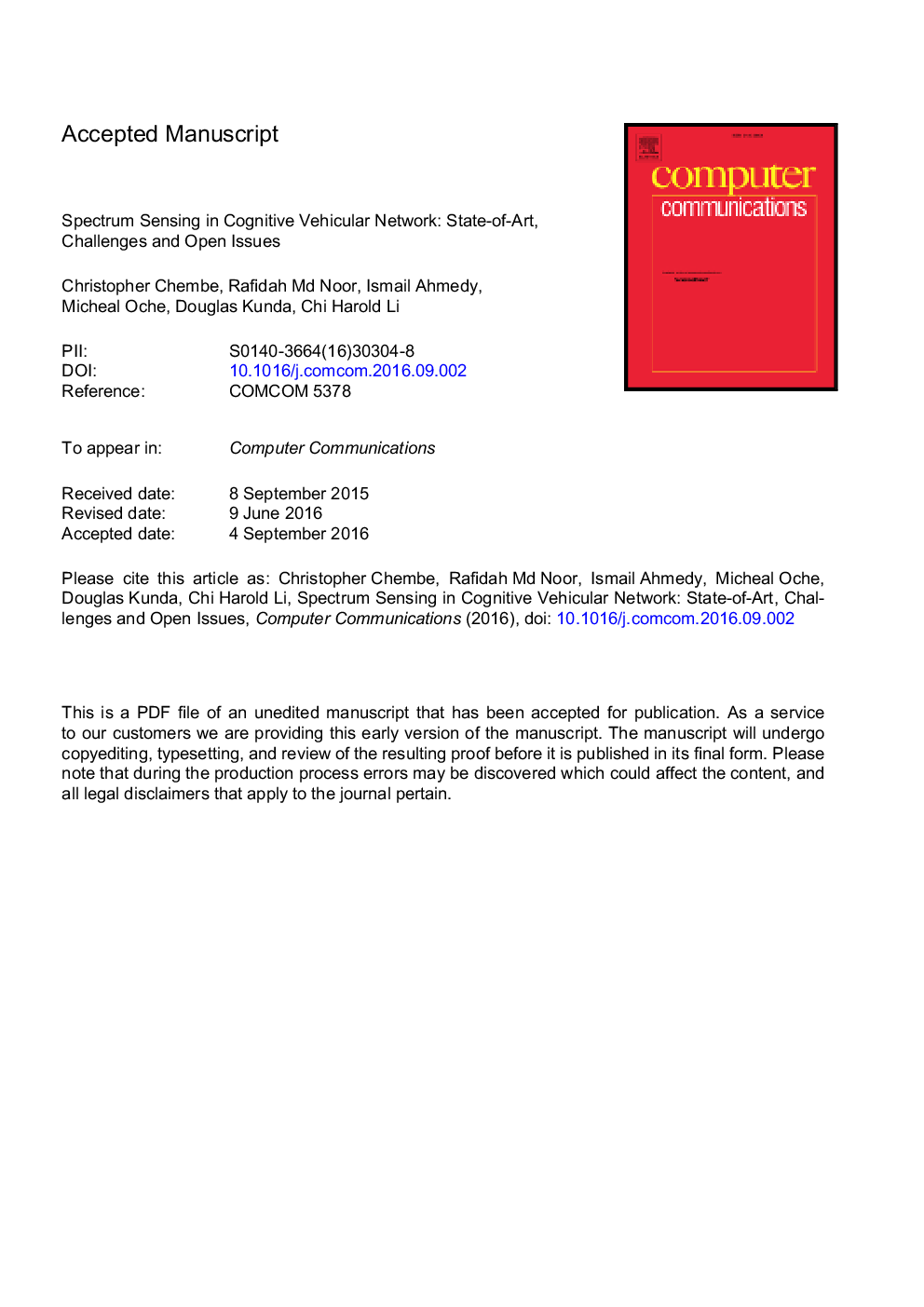| Article ID | Journal | Published Year | Pages | File Type |
|---|---|---|---|---|
| 4954521 | Computer Communications | 2017 | 22 Pages |
Abstract
Vehicular Ad Hoc Network (VANET) is envisaged to play an important role in the safety of drivers and passengers when moving on the roads. However, VANET still faces many challenges before it could be deployed. One such challenge is shortage of radio frequency spectrum channels. VANET has been allocated 7 channels for dedicated short range communication at 5.9Â GHz band. The 7 channels are likely to get congested in high vehicle densities when many vehicles are contending for the same medium. Consequently, affecting the transmission of safety and emergency messages. To alleviate the problem of scarcity channels, dynamic spectrum access (DSA) through cognitive radio (CR) technology has been proposed. One of the core functions of a CR is to identify spectrum holes in licensed frequency bands that can be accessed by unlicensed users through spectrum sensing. In VANET, spectrum sensing is challenging because of the mobility nature of vehicles, dynamic topological changes as well as other unique characteristics not found in other networks. However, these challenges have not been fully studied and how they affect spectrum sensing in cognitive vehicular network (CVN). In this paper, we discuss challenges associated with spectrum sensing in CVN. We describe the primary system activity model used by many schemes proposed in literature. Furthermore, we present an in depth analysis of state-of-art cooperative spectrum sensing techniques for CVN from 2010 to May 2016. In addition, we present some of the open issues in spectrum sensing for CVN.
Keywords
Related Topics
Physical Sciences and Engineering
Computer Science
Computer Networks and Communications
Authors
Christopher Chembe, Rafidah Md Noor, Ismail Ahmedy, Micheal Oche, Douglas Kunda, Chi Harold Liu,
